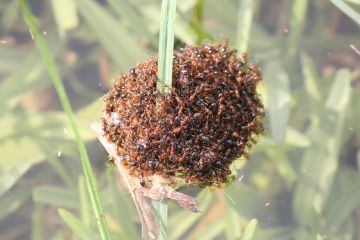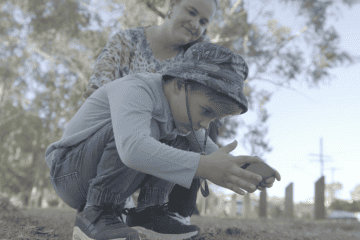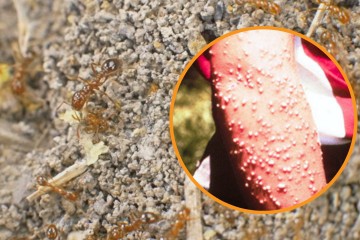An overseas warning
Dr Robert Puckett from Texas A&M University is no stranger to Australia’s fire ant fight.
This month he visited, for the second time, with a dire warning: we can’t let fire ants win. Australians have not had to live with fire ants like people have in the United States. They have given up any chance of eradicating fire ants. Instead, they treat fire ants every year on their properties to fend off the possibility of fire ant stings to humans and animals.
Each year fire ants cost the United States around $10 billion (USD).
Each year thousands of tonnes of fire ant insecticide products are used to treat land in the United States.
Each year fire ants sting people and animals despite this control work and sometimes these attacks result in fatalities.
Fire ants have changed the ecology of the southern United States.
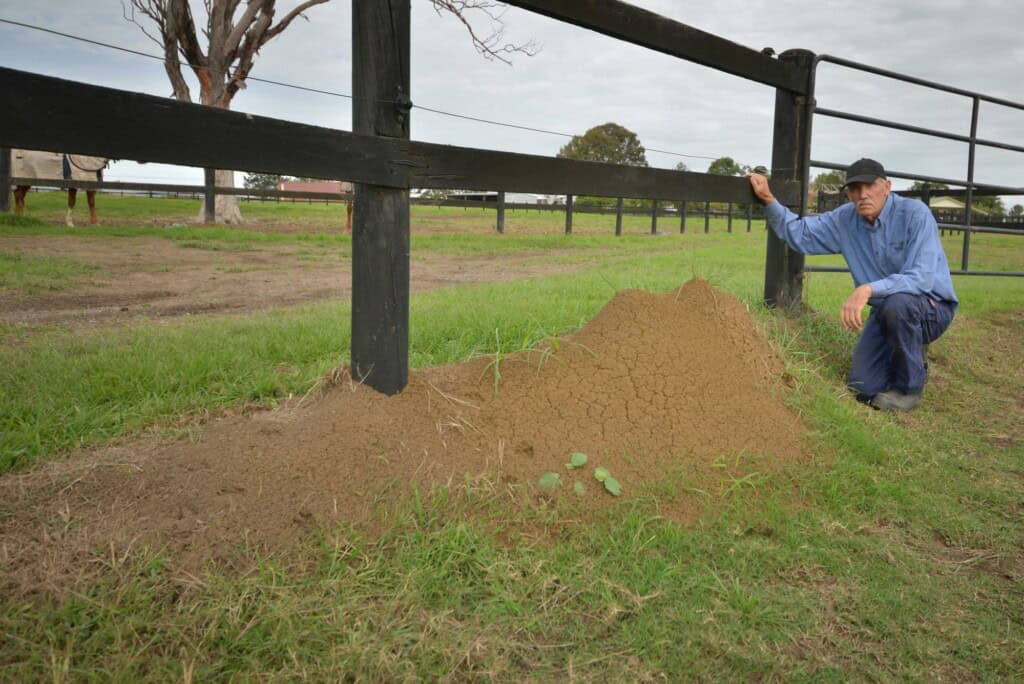
Fire ant population density challenge
A drive on Cedar Grove Road an hour southwest of Brisbane was cause for despair. From the car Robert and I were able to identify dozens of mounded fire ant nests on the roadside, on lawns and in paddocks.
Cedar Grove sits in the Suppression Zone meaning residents, organisations and councils can receive materials to treat the fire ant infestation in their community. At the same time, government-funded eradication teams are working at the outer edge of the infestation. The eradication zone is 20km further south.
Cedar Grove is not the frontline in Australia’s fire ant fight – it’s occupied territory.
Worryingly, the infestation at Cedar Grove is just one of a number of areas within the fire Suppression Zone with densities approaching the levels of Texas.
Earlier this year fire ants travelled over 100km to Wardell south of Ballina in human cargo. That nest was detected and destroyed. Similarly, an infestation at Oakey was detected around 100km from the centre of the fire ant infestation. These are cautionary tales – if suppression and containment fails, expect rapid spread to other parts of Australia. Unlike America where fire ants have reached the extent of their natural range, fire ants will be able to occupy almost all of Australia.
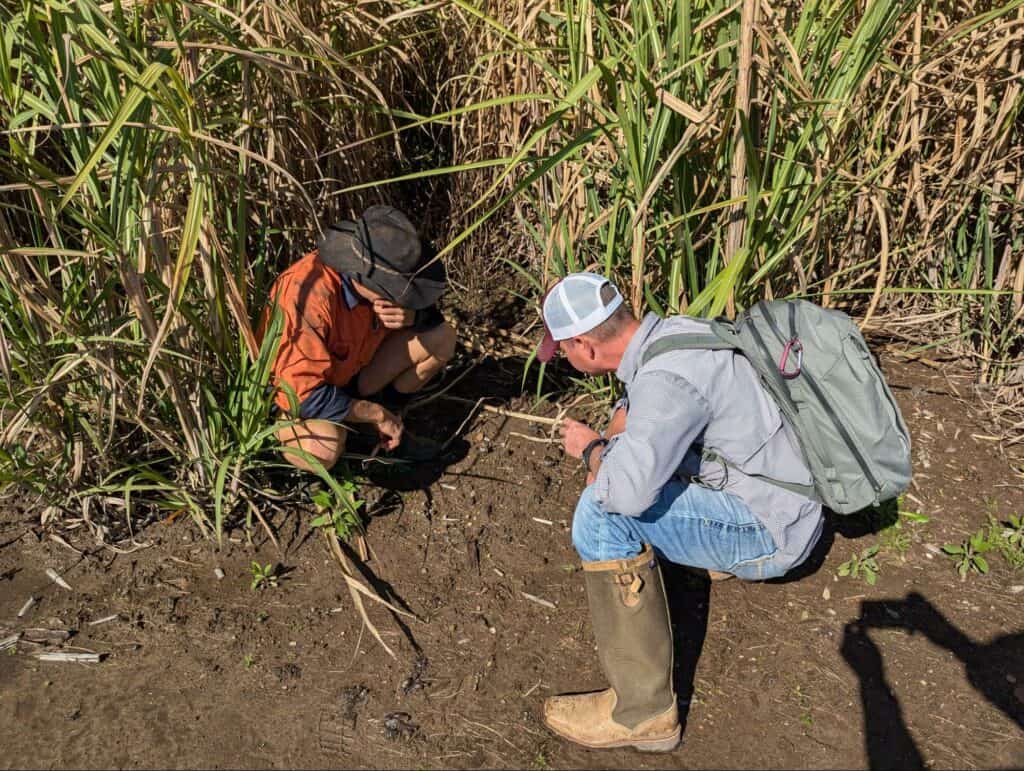
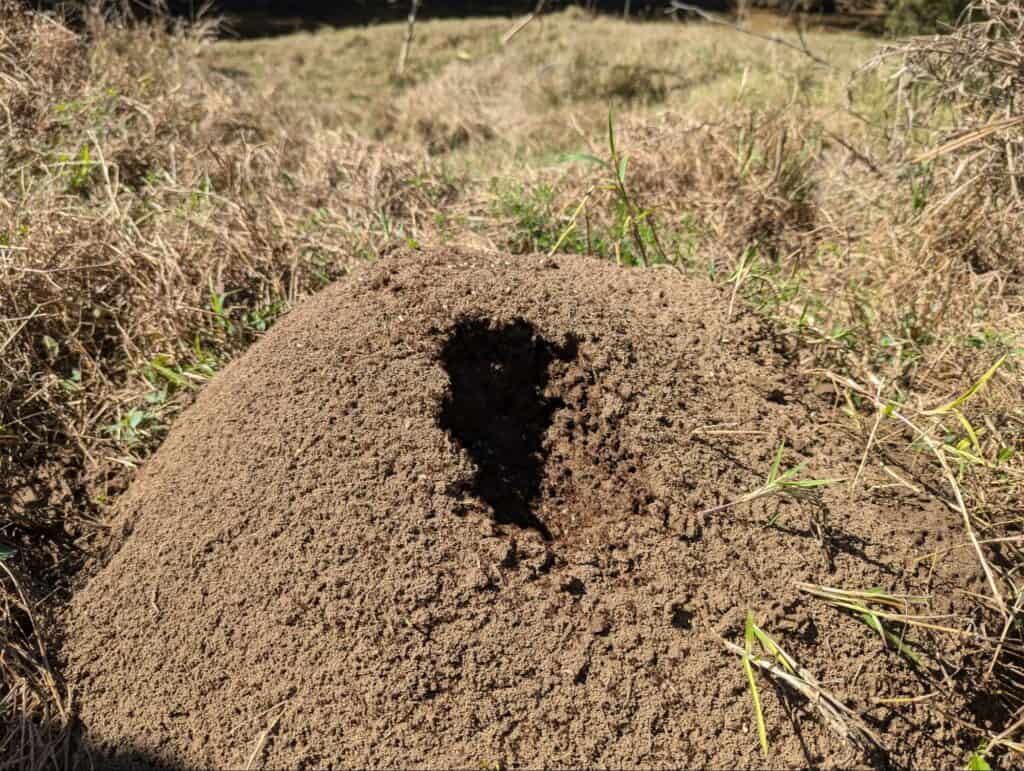
Suppression must target mounds and incipient nests
Cedar Grove Landcare is organising their community to suppress fire ants. Free fire ant treatments distributed by their local member of parliament, Linus Power, and the Queensland government Fire Ant Suppression Taskforce is essential for community self-treatment. While Robert was in Australia we also hosted a fire ant ‘mini field day’ to educate local properties about the risks of fire ants and proper treatment application.
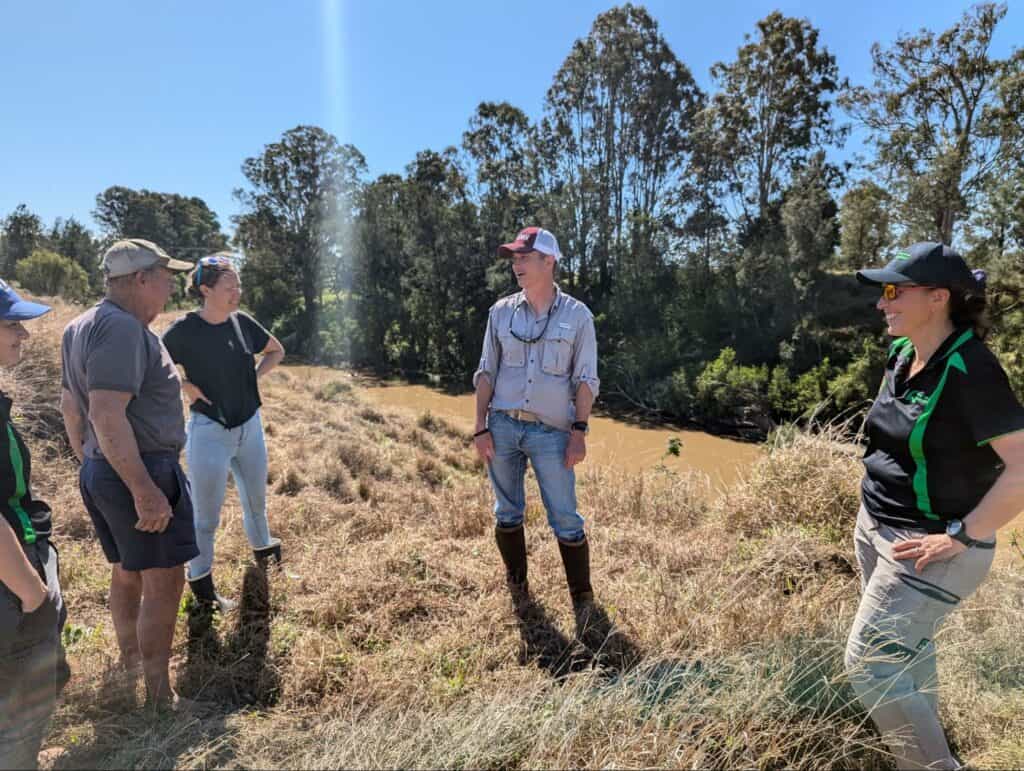
Using food lures we demonstrated that areas with no visible nests will be infested with fire ants in high-density locations. Seven of eight lures had attracted a heavy fire ant foraging presence. Broadcast treatments are the only way to suppress incipient and subterranean fire ant infestations. The Queensland and federal governments must increase suppression funding for broadcast treatment in areas with the highest infestations.
The Cedar Grove community is one of many local groups and volunteers stepping up to respond to fire ants. They are finding no adverse effects from fire ant treatments on humans or animals.
Community suppression treatment is laying the groundwork for the full eradication effort which must treat and check every property in the infestation area to completely eliminate the ants.
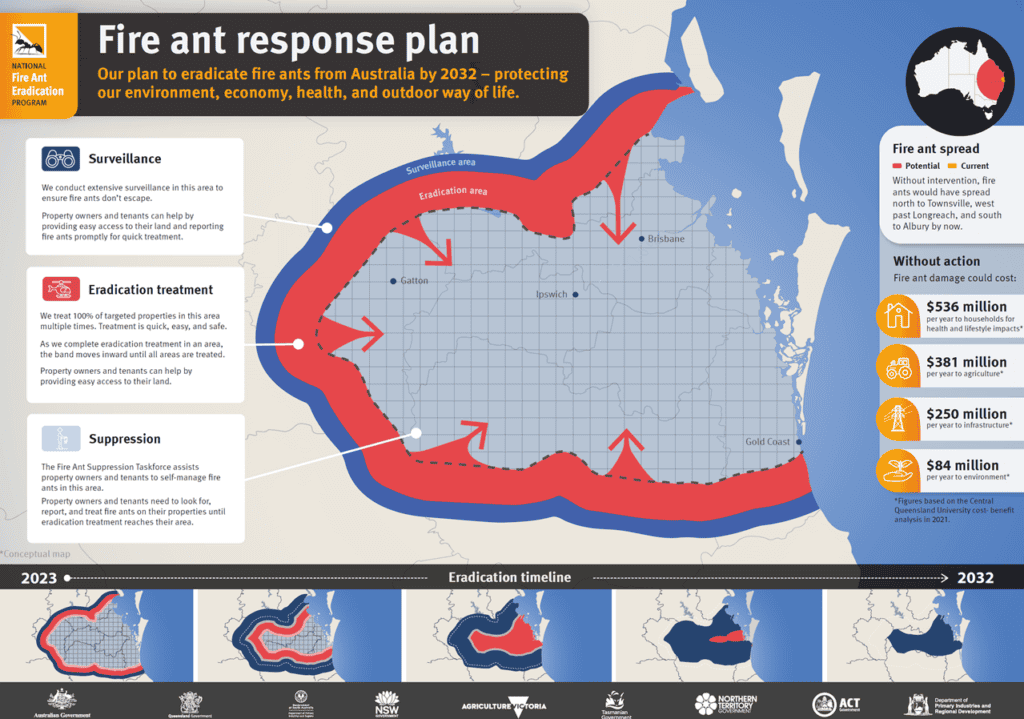
Urgent suppression boost required
Fire ant nests have recently been found close to the koala sanctuary at Daisy Hill. Koalas are vulnerable to fire ant attacks when moving at ground level between trees; their thick fur will make it difficult to dislodge fire ants once they begin stinging. Queensland koalas are under threat by urban sprawl but now their sanctuary locations are also under attack from fire ants. Suppression treatments will help stop fire ant spread and protect humans and wildlife from fire ants.
Fire ant suppression must expand and continue until the systematic and thorough eradication program rids our country of fire ants.
Do you live in Queensland? Right now no party contesting the Queensland election has committed to long term fire ant eradication funding or a boost to suppression and containment. Find out the impacts fire ants will have on your local area here.

